How big are tuna? That all depends on the species. But no matter what kind you have on the end of your line, your shoulders and arms are going to get a workout reeling it in. If you happen to be battling blackfin tuna in the South, which average between 8 and 15 pounds, you can catch a whole bunch before getting sore. Chase giant bluefins, however, and you can spend hours on the rod battling one fish. In 1979, Canadian angler Ken Fraser landed a bluefin weighing 1,496 pounds off the coast of Nova Scotia—and to this day it still holds the record for the largest tuna ever caught on a rod and reel. Sound like too much of a struggle for you? Then maybe you’re up for the challenge of yellowfin or bigeye tuna. Want to take it even easier? Try skipjack or albacore tuna.
Here’s a breakdown of just how big each species of tuna found in U.S. waters grows. It’ll help give you an idea as to how big tuna are—and if you’re ready for the fight them…or if you need to hit the gym before wetting that line.
Bluefina Tuna
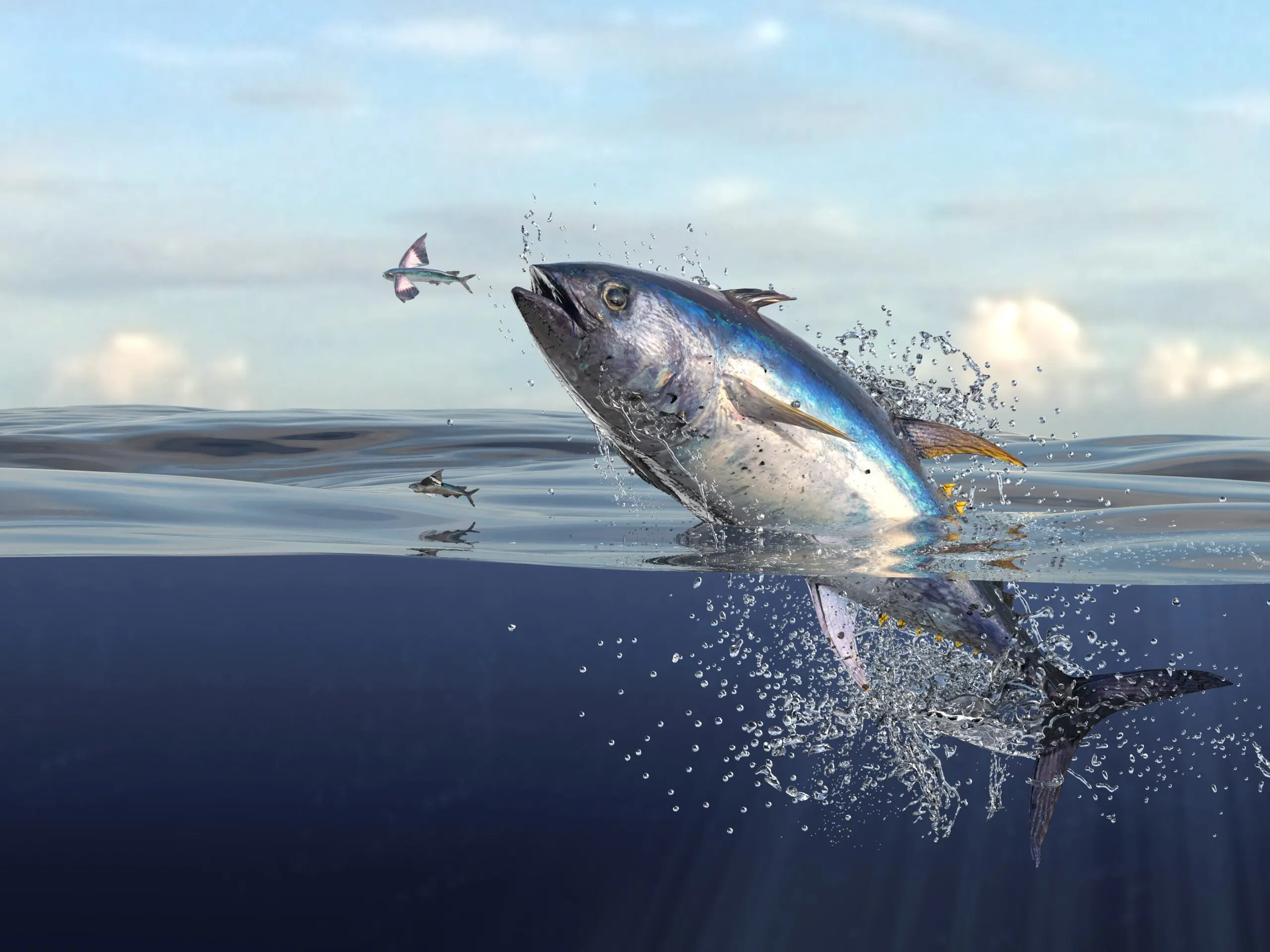
A smaller bluefin chases a flying fish. Adobe Stock/bekirevren
Hot Spots: Cape Cod, Outer Banks, Southern California
Bluefins are the undisputed kings of the tunas for the simple reason that they grow larger than all their cousins. The key reason for this is that they thrive in much colder water than other tuna species and, in general, fish that live in colder water are genetically engineered to grow bigger. How big are tuna? Well, where bluefins are concerned, historically fish weighing more than 1,000 pounds routinely hit the scales, though most of them were captured by commercial tuna fishing operations decades ago. Sadly, bluefin tuna populations are on the decline around the globe as they are one of the most valuable fish on the market, particularly in Japan where a single high-quality bluefin can fetch north of $1 million. Fans of the show “Wicked Tuna”
might notice that these days it’s a big deal to land a bluefin weighing more than 500 pounds, though that’s still a massive fish that would take hours to reel in. Though regulations in both U.S. commercial and recreational fishing sectors have gotten very tight, charter boats from the Carolinas through New England can put you on plenty of bluefins in the more manageable size range of 30 to 100 pounds.
**Read Next: Florida Angler Catches 832-Pound Bluefin Tuna
**
Yellowfin Tuna
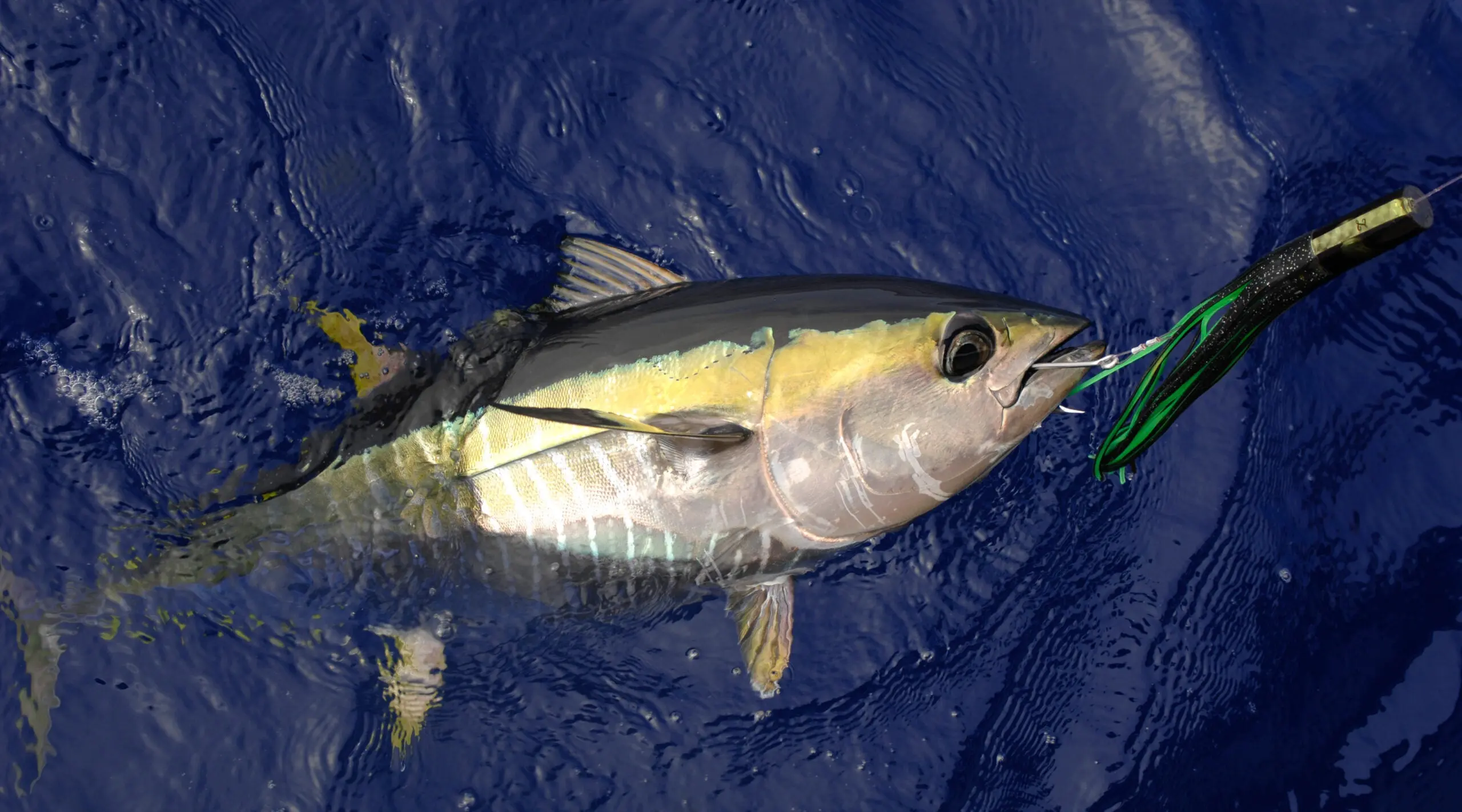
A yellowfin comes to the side of the boat. Adobe Stock/David J. Shuler
Hot Spots: Outer Banks, Southern California, Louisiana, Hawaii
The current world-record yellowfin tuna was taken off the coast of Mexico in 2012 and weighed a whopping 427 pounds. Not long after its capture, a 445-pound yellowfin hit the dock in San Diego, California, however, to date it doesn’t appear to have been certified as the new world record. Both fish are extreme rarities, though, as in most areas where they thrive, they average 25 to 60 pounds. Yellowfins prefer water in the 70- to 85-degree temperature range, which explains why it’s more common to find fish weighing upwards of 100 pounds in the Gulf of Mexico, Southern California, and Hawaii where temperatures are more favorable throughout the year, making yellowfins residents. In the Northeast, yellowfin bites are fleeting, as they follow the warm Gulf Stream waters north in summer and head back south when things cool off in the fall.
Bigeye Tuna
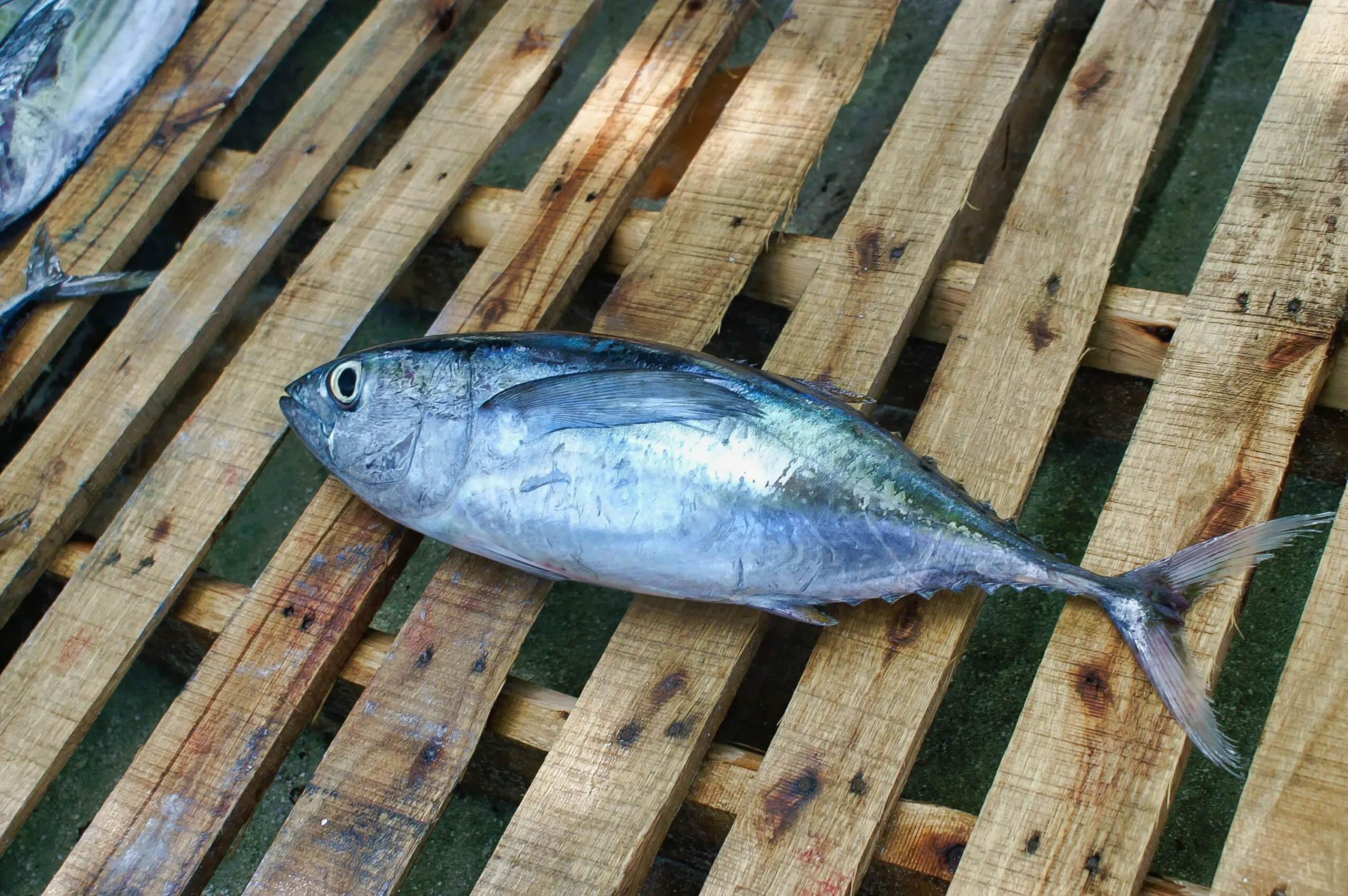
A small bigeye tuna sits at the fish market. Adobe Stock/MikeCloud
Hot Spots: Outer Banks, Hawaii, New York/New Jersey
The heaviest rod-and-reel bigeye ever recorded weighed 435 pounds and was landed off the coast of Peru in 1957. Though Pacific and Atlantic bigeyes look identical, science does distinguish them as different species, and in the Atlantic, the biggest ever taken weighed 392 pounds. Whereas most other tuna species—even giant bluefins—have no issue feeding in relatively shallow water if the conditions are right and a food source is present, bigeyes largely stick to very deep water. Because of this, targeting them often requires a long ride to the edge of the continental shelf in the Atlantic. The payout for the effort, however, is that these fast-growing tunas average 5 feet in the length and usually weigh at least 100 pounds. Though they’re not as coveted commercially as bluefin, they are extremely fatty, which is why many recreational fishermen agree their meat is the most delicious and decadent.
Albacore Tuna
Hot Spots: Washington, Oregon, Northern California
Also known as “longfin tuna,” albacore is what you’re eating when you buy a can of Starkist in the grocery store. The world-record was caught off Spain’s Canary Islands in 1977, and weighed in at 88 pounds. Interestingly, while albacore exist throughout the Atlantic and tend to weigh more than their Pacific counterparts, they are far less desirable to East Coast anglers, as their meat is white instead of red, making their flavor far milder than other tunas. On the Pacific Coast, these fish average only 20 to 30 inches, and a 30 pounder would be a monster. Though because they are the dominant tuna species in the region, they are extremely popular among recreational anglers. There is also a thriving commercial fishery for them along much of the West Coast, which you can be grateful for every time you make a canned tuna salad sandwich.
Blackfin Tuna
Hot Spots: Louisiana, Southern Florida
The blackfin tuna world-record has held at 49 pounds, 6 ounces, since 2006. Though a small fish compared to the size of yellowfins, bluefins, and bigeyes, it’s stunningly massive considering your average blackfin will fall in the 8- to 15-pound range. The record came from the Florida Keys, which is still one of the best blackfin destinations in the country, though the Gulf waters off Mississippi and Louisiana arguably boast the greatest number of trophy-class blackfins in the 15- to 30-pound range. Blackfins are a light-tackle angler’s dream, as they don’t require heavy gear and they taste (at least in my opinion) as good as yellowfins. The caveat is that blackfin meat tends to not freeze as well as other tunas, so you’re smart to take only what you can eat fresh.
Skipjack Tuna
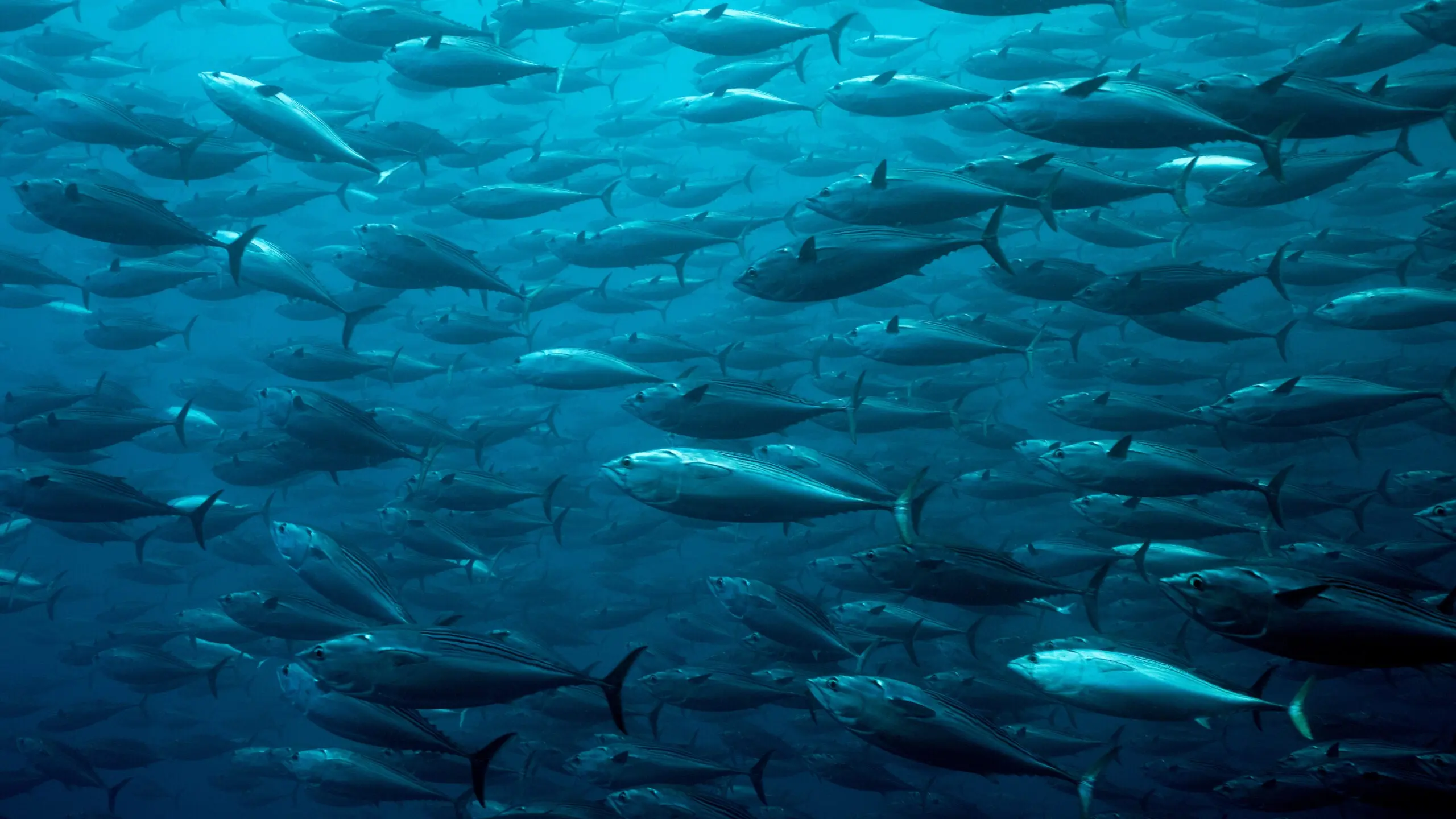
A school of skipjack tuna swimming in the Galapagos. Adobe Stock/Janos
Hot Spots: Outer Banks, New England, Southern California
Skipjack tuna are found in every temperate ocean in the world, and no matter where you catch them, they’re probably a consolation prize for something sexier you were likely targeting. Averaging 7 to 12 pounds, skipjack will provide a ripping fight on light tackle like blackfins, it’s just that in terms of edibility, skipjack don’t quite stack up to any of their cousins. Eaten the day of capture, it’s not bad and actually makes pretty good sashimi. However, skipjack is darker and oilier than other tunas, giving it a stronger flavor more akin to mackerel which many people don’t enjoy. The larger the fish the oilier they tend to be, which makes one wonder if the 46-pound, 5-ounce world record caught off Spain in 2020 ever made it to the table.
Little Tunny
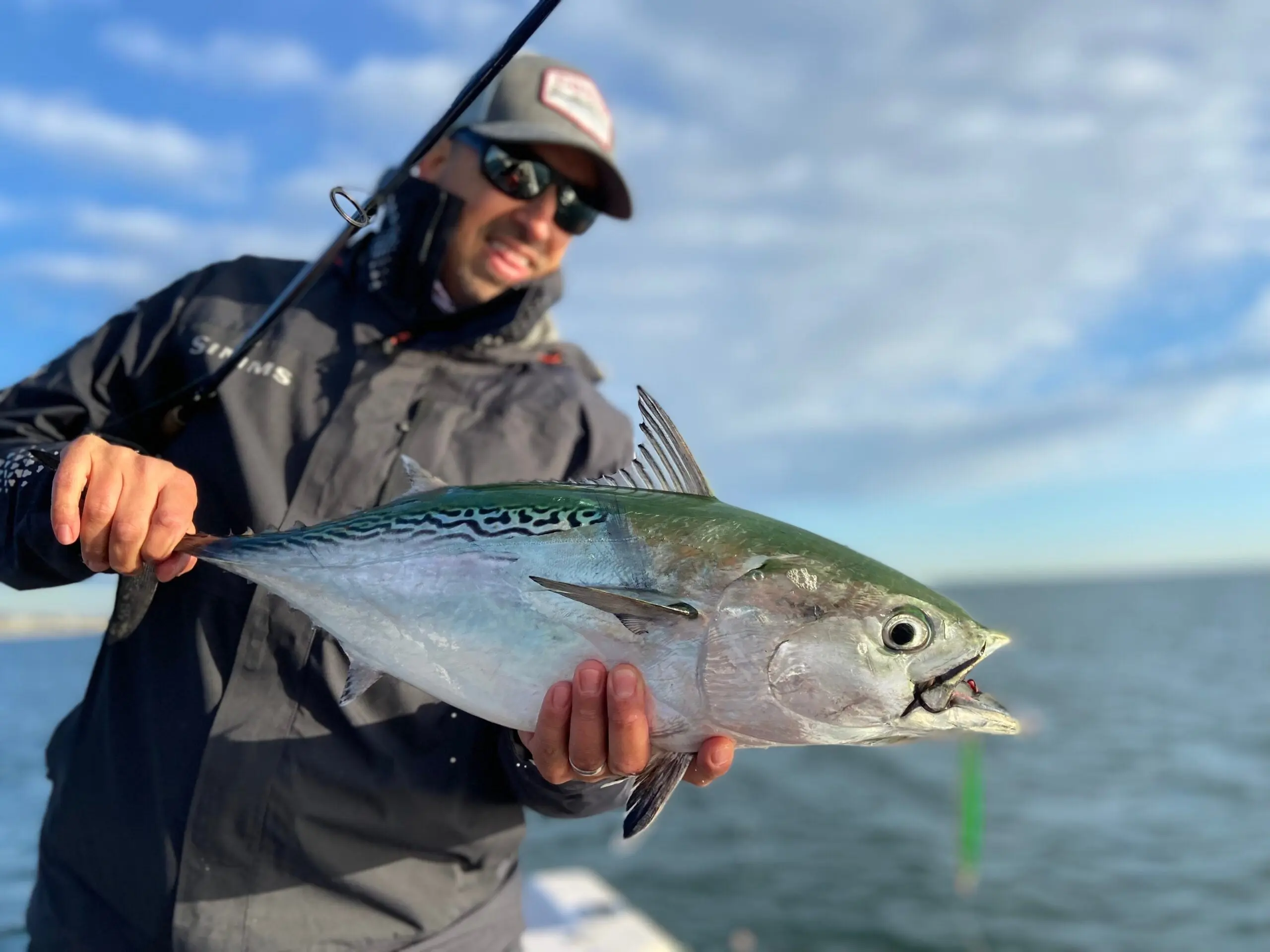
Angler Mike Sudal shows off a nice little tunny. Joe Cermele
Hot Spots: Outer Banks, New England, Louisiana
In the Northeast they’re called “false albacore.” In the South they’re known as “bonita.” The funny thing about these fish, however, is that they’re a scourge in one region and a prize in the other. The world-record little tunny weighed 36 pounds and was caught off the coast of Spain in 2020. That’s a true goliath, as the average in U.S. waters hovers around 8 pounds. In New England and the Mid-Atlantic, these fish come in close to the beach in the fall, making them accessible to shore anglers and those with smaller boats. But in the South where they live year-round, they’re a nuisance to anglers chasing more glamorous species like yellowfins and king mackerel. They can be so thick in the Gulf that it’s almost impossible to get a bait or lure to your desired target. While they’re a blast to catch, they’re even less prized on the table than skipjack, as their meat is so dark it’s almost black and contains loads of oil.
FAQs
How big can a full-grown tuna get?
Bluefin tuna can exceed 1,000 pounds, while yellowfins and bigeyes reach the 400-pound mark. Albacore tuna can reach weights upwards of 50 pounds, while skipjack and blackfins rarely exceed 30 pounds.
What’s the largest tuna ever caught?
In 1979, Canadian angler Ken Fraser landed a 1,496-pound bluefin tuna off the coast of Nova Scotia. All these years later, his record still holds. He caught the tuna on a mackerel trolled behind his boat, and according to reports, Fraser beat the fish in an astounding 45 minutes.
How much is a 1,000-pound tuna worth?
In 2019, a 612-pound bluefin tuna sold for an incredible $3.1 million at a Japanese fish market. To date, it’s the most expensive tuna ever sold. Price is often dictated by the quality of the meat, so it’s reasonable to assume a high-quality fish weighing 1,000 pounds could fetch more than $3 million.


